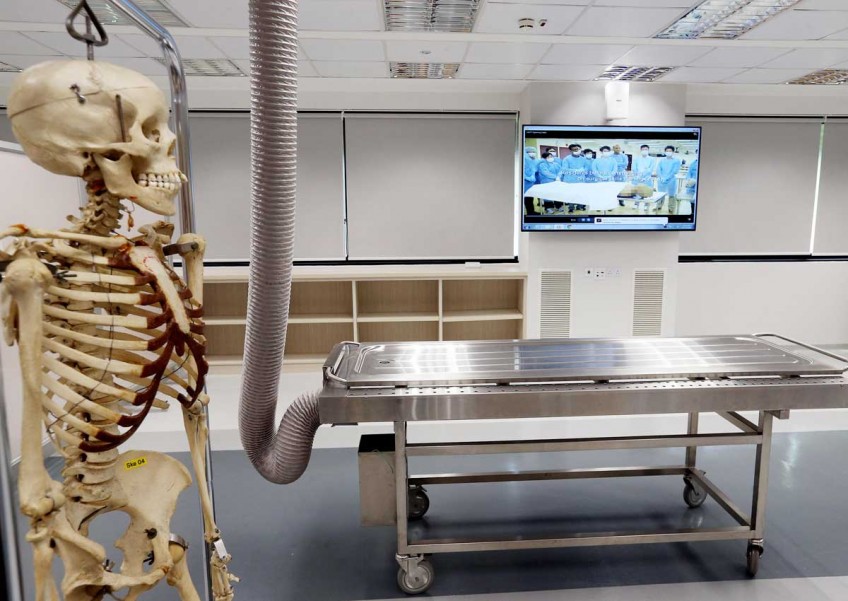Dissecting human cadavers: Classes reintroduced as elective


Faced with a shortage of donated human bodies, the Yong Loo Lin School of Medicine at the National University of Singapore (NUS) discontinued its dissection classes for first-year students in 2003.
Now, fourth-year students will get a feel of what it is like to handle a real human cadaver during surgery when the classes are reintroduced as an elective posting later this year. The move follows an encouraging response to a programme started in 2012 to demystify the idea of donating bodies to science.
The classes were announced yesterday at the launch of a refurbished human anatomy teaching facility at NUS. The facility's first major refurbishment in 30 years, it cost $5 million and took six months.
The anatomy department received 12 pledged bodies last year and 14 in 2014, up from nine in 2013 and six in 2012.
The new mortuary can store 100 cadavers, up from 60 before, and the teaching space, which originally covered 1,050 sq m, has been expanded by 16 per cent.
Professor Bay Boon Huat, who heads the department, said it goes to great lengths to stress respect and gratitude for these "silent mentors" and their families.
Currently, all first-year students attend anatomy prosection classes, where they work with cadavers that have already been dissected by an expert, to learn more about the body's anatomical structures.
Students take a pledge to treat the cadavers with dignity, and hold appreciation ceremonies for the donors' families.
Normal cadavers are used for teaching for up to three years. The body is then cremated and the remains returned to the family.
Health Minister Gan Kim Yong, who launched the new facilities yesterday, said: "We are deeply indebted to Singaporeans who have chosen to donate their own bodies as cadavers, to further the cause of medical education, research and patient care by their last act."

This article was first published on March 18, 2016.
Get a copy of The Straits Times or go to straitstimes.com for more stories.